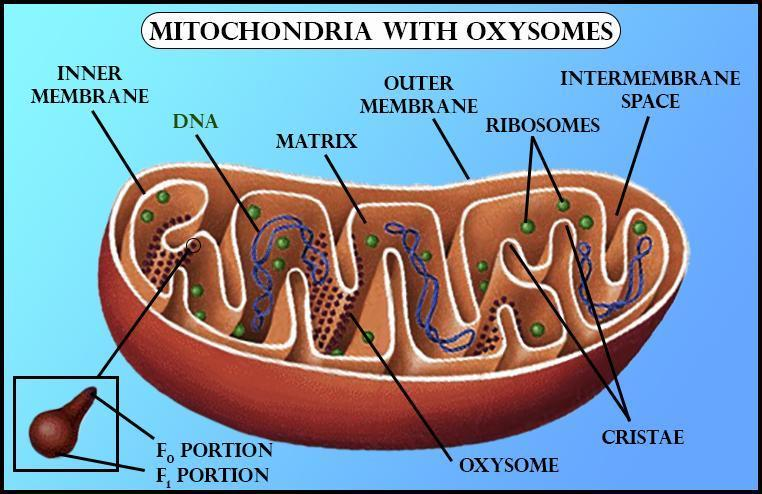
Oxysomes or
(a)Thylakoids
(b)Mitochondrial surface
(c)Inner mitochondrial membrane
(d)Chloroplast surface
Answer
498.3k+ views
Hint: Oxysomes occur on the wall of an organelle that is rightfully called the powerhouse of the cell. It is responsible for the generation of ATP through the oxidation of glucose. This releases energy which helps to join ADP and inorganic phosphates which gives ATP.
Complete answer:
Oxysomes or
Let's begin the explanation by understanding what oxysomes are.
The energy released during the electron transport system is utilized in generating ATP with the help of ATP synthase (complex V). This complex is made up of two major components,
Additional Information: -The two membranes divide the lumen of mitochondria distinctively into two aqueous compartments.
-Oxysomes are also called ‘elementary particles.’ They play a major role in respiration by taking part in oxidation reactions thus generating ATP.
-The arrangement of thylakoids is in the form of stacks like the piles of coins. This is called ‘granum.’
So, the correct answer is, ‘Inner mitochondrial membrane.’
Note: -Mitochondria is a double membranous structure with its outer and inner membranes. The two membranes of mitochondria have their specific enzymes associated with the organelle’s function.
-Like mitochondria chloroplast also possesses two membranes. Out of the two, the inner membrane of the chloroplast is relatively less permeable.
-Within the stroma of chloroplast, organized flattened membrane sacs are seen. These are called ‘thylakoids.’

Complete answer:
Oxysomes or
Let's begin the explanation by understanding what oxysomes are.
The energy released during the electron transport system is utilized in generating ATP with the help of ATP synthase (complex V). This complex is made up of two major components,
Additional Information: -The two membranes divide the lumen of mitochondria distinctively into two aqueous compartments.
-Oxysomes are also called ‘elementary particles.’ They play a major role in respiration by taking part in oxidation reactions thus generating ATP.
-The arrangement of thylakoids is in the form of stacks like the piles of coins. This is called ‘granum.’
So, the correct answer is, ‘Inner mitochondrial membrane.’
Note: -Mitochondria is a double membranous structure with its outer and inner membranes. The two membranes of mitochondria have their specific enzymes associated with the organelle’s function.
-Like mitochondria chloroplast also possesses two membranes. Out of the two, the inner membrane of the chloroplast is relatively less permeable.
-Within the stroma of chloroplast, organized flattened membrane sacs are seen. These are called ‘thylakoids.’

Latest Vedantu courses for you
Grade 9 | CBSE | SCHOOL | English
Vedantu 9 CBSE Pro Course - (2025-26)
School Full course for CBSE students
₹37,300 per year
Recently Updated Pages
Master Class 11 Economics: Engaging Questions & Answers for Success

Master Class 11 Business Studies: Engaging Questions & Answers for Success

Master Class 11 Accountancy: Engaging Questions & Answers for Success

Master Class 11 English: Engaging Questions & Answers for Success

Master Class 11 Computer Science: Engaging Questions & Answers for Success

Master Class 11 Maths: Engaging Questions & Answers for Success

Trending doubts
State and prove Bernoullis theorem class 11 physics CBSE

1 ton equals to A 100 kg B 1000 kg C 10 kg D 10000 class 11 physics CBSE

State the laws of reflection of light

One Metric ton is equal to kg A 10000 B 1000 C 100 class 11 physics CBSE

1 Quintal is equal to a 110 kg b 10 kg c 100kg d 1000 class 11 physics CBSE

Difference Between Prokaryotic Cells and Eukaryotic Cells




